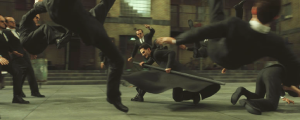Hey Everyone! Unfortunately due to illness I was unable to come to class and had missed out on your very interesting game ideas. This week was about creativity and you were all put in a position where you could fuel your creativity from each other, it was like building blocks as you worked from other peoples sentences to create a story that (I don’t think) someone couldn’t think up on their own. The hilarity of them was amazing and I would definitely play these games to my heart’s content.
This week’s readings were interesting and also very helpful towards creative thinking for our assignments. Creativity is one of the main skills needed when coming up with your own game idea because how else will you think of something that’s meant to be new and cool? Creativeness is in all of us, but not everyone can tap into it so that it becomes useful. “Don’t let your dreams be dreams!” – Shia Labeouf. To reach full creative capacity you must be able to embrace your creativity and grow from random ideas. Ideas such as these are discussed in Fullerton’s reading. Fullerton states that we all have ideas that come to us constantly throughout the day and while we take part in our daily activities (Fullerton, 2004) it’s good to take note during this reading as good points are made that could give an advantage to us. Points such as keeping notepads and voice recorders to write down or say your ideas as soon as they come to mind (Fullerton, 2004) to do this will allow you to keep hold onto small ideas that can be easily forgotten but could have great value in the future. A quote from the reading to back this up is “They’re impossible to predict or corral, and if you’re not paying attention, they slip right past you.” (Fullerton, 2004, p.140). Further reading discusses how to organize your ideas so that they won’t be scattered about and can be structured to mean something. Having a lot of creative ideas flowing about is great but without correct organization they won’t have much of an effect and will get lost. To study this reading early will provide a good working set up for those of us who get lost when trying to get our creativity pumping.
The second reading by Rollings is also very helpful when putting our game ideas down on paper and the continuing to give them structure. It’s a step by step procedure. The reading describes the procedure as putting it together like a skeleton and then adding more details, which is described as adding meat to the bones (Rollings, 2003).
Just an extra paragraph to add interest. As I’m writing this blog I am watching the Matrix which I watch purely for the Keanu Reeves fight scenes where he takes on heaps of foes with a magnificent jacket that flows elegantly. A fight scene in a movie can be fantastic if done correctly but with a game, it can leave a game changing moment where a player is so engaged in the gameplay that they believe their own life in on the line as they play. I’m sure we have all reached a boss battle in a game where we are on the edge of our seats furiously pressing buttons and trying to rethink our strategies. Some of these battles may leave you on the brink of insanity but the completion of it seems so much sweeter. What I’m getting at is the way engaging fight scenes can leave a viewer/player intrigued and willing to fight for their life. And I don’t consider Bloodborne or Dark souls to be in this category because their fight scenes are suicidal and insanity is the only thing you will get from them.

Fullerton, T., Swain, C., & Hoffman, S.. (2004). Conceptualization. Game Design Workshop (pp. 140-156). San Francisco: CMP Books
Rollings, A. & Adams, E. (2003). Game Concept Worksheet & Sample High-Concept Document. On Game Design (pp. 53; 574576). Berkeley, California: New Riders